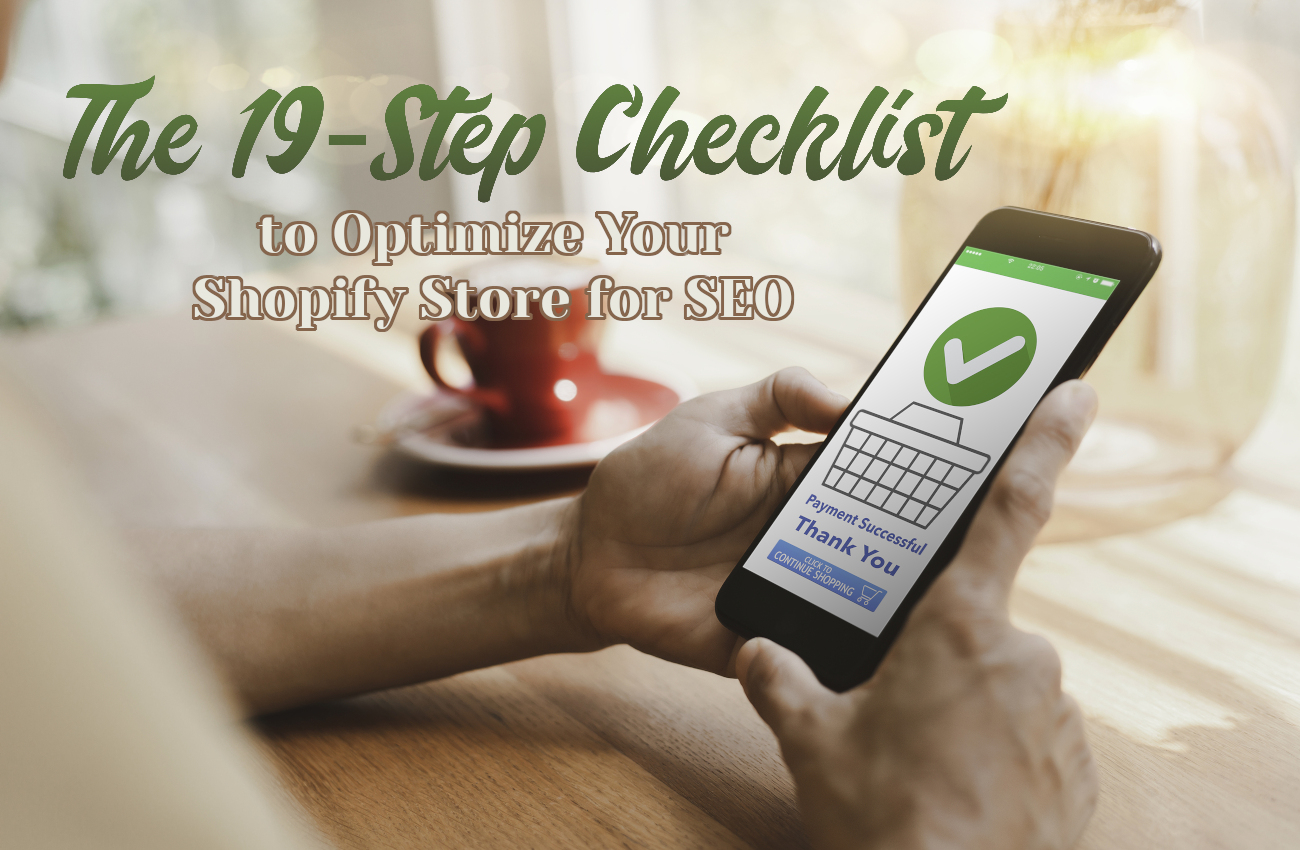1. Use a Custom Domain
We highly suggest removing ‘myshopify’ from your URL and investing in a custom domain. Having one makes you look more professional and appealing to your customers.
2. Choose a User-Friendly E-Commerce Website Design
Code-heavy themes might look prettier, but you’re better off choosing a Shopify theme that loads quicker. Page speed is a confirmed ranking factor and can affect you negatively. Make sure the theme is mobile-optimized as well!
3. Set Up Analytics Tools
E-commerce metrics are an important part of your business as it helps you understand where your website traffic is coming from and how to keep them coming. Use tools like Google Analytics and Google Search Console for this.
4. Get Shopify Apps
Aside from Google’s analytical tools, there are other helpful tools on Shopify that improve SEO and are easy to install. These include Plug In SEO, SEO Pro, and Smart SEO.
5. Conduct Keyword Research
Identify relevant keywords to your business. These are the keywords organic searchers will use to hopefully find your site. You want to make sure these keywords reach a reasonable number of searches per month and aren’t too general so you’re not competing with too many people.
TagCrowd and Keywords Everywhere are some keyword sites you should consider.
6. Optimize Your URLs
Create custom URLs for each of your product pages. Make sure these URLs are short (so they’re easy to remember), include a keyword (so your customers can easily find what they’re looking for), and avoid unnecessary words like a, an, or the.
7. Optimize Page Titles and Meta Descriptions
Page titles and meta descriptions help Google figure out what your e-commerce website pages are all about. Oftentimes they’re not visible to searchers, but they sometimes show up as snippets on Google searches. Add in your relevant keywords to these as well, but make sure not to overstuff. Just because they’re not visible doesn’t mean Google won’t notice it!
8. Refrain from Thin Product Descriptions
Take the time to write descriptive product descriptions. These are what your customers read when they visit your site, so you want to make it count. Add in your keywords and their variations and synonyms to make them easier to find on search engines.
Also, always make sure you have unique descriptions for every product. That way, you won’t get tagged for duplicate content.
9. Optimize Alt Text
Google isn’t going to know what your images will look like. They’re going to rely on your alt text to figure them out. Add in your keyword-rich alt texts so Google will know what your page’s contents are. Doing this also makes your site more accessible to the visually impaired.
10. Create Entertaining Blog Content
Having high-quality blog content on your website is crucial to retaining customers. It helps with brand awareness and gives your users reasons to keep coming back to the site.
Make sure your blog content is a.) something related to your business, b.) something that shows your expertise in the field, and c.) something that’s fun and entertaining for your audience to read.
11. Have an SEO-Friendly Navigation Menu
A user-friendly menu helps your users navigate your online store quicker. It also lets Google crawl through your site more efficiently. Ensure your products are organized well in categories and subcategories and have the menu consistent for all pages.
12. Add Internal Links
Internal links keep your audience moving throughout your website. The more internal links there are, the more time your users will spend on your site.
Additionally, they emphasize to Google what the most important pages on your website are and helps boost their rankings.
13. Add Products Schema
Users on Shopify should consider having the following product schemas if applicable: aggregate rating, brand, category, color, dimensions, model, material, special offers, and image.
You can do this manually or by using any of Shopify’s schema tools here.
14. Add Reviews
As a digital marketing agency in Los Angeles, we know just how important reviews can be in the buyer’s journey. It can be the driving force that converts window shoppers to customers!
Download Shopify’s Product Reviews app. This’ll help your products show up with star ratings on Google’s search engines, making them look extra appealing to customers.
15. Build Links to Your E-Commerce Website
It’s important to build links with other offline websites. This shows Google your site is trustworthy.
To do this, you should aim for well-written content and ask related websites to link to it; get featured in product reviews and gift guides; look for blogs that allow guest writers and mention your online store from there.
16. Do Public Relations Outreach
Investing in public relations is a great way of generating links from reputable websites for your store.
If you’re unsure of how to do this, sign up for Help A Reporter. This is a site for journalists who need content. Who knows, maybe they’ll ask you for an interview or feature one of their products!
17. Audit Your Website
Always look over how your site’s performance. Figure out which pages are performing the best and which pages aren’t faring well. This’ll help you identify key content, find any issues you want to solve, and improve user experience.
18. Repair Broken Links
Like any other old building needing renovations here and there, your online store will need a bit of clearing up every once in a while. Some of your internal links may have gone down while you were working on your site.
Google doesn’t like too many broken links as it makes your website look inactive. So, run a site crawler like Screaming Frog once a while to find, repair, and remove any broken links.
19. Study User Data
As your site grows, it’s important to use the analytical tools from earlier to study the data they’ve gathered. Draw insights from the tools’ research to improve your keyword targeting, content marketing, backlinking, meta tagging, and more.
